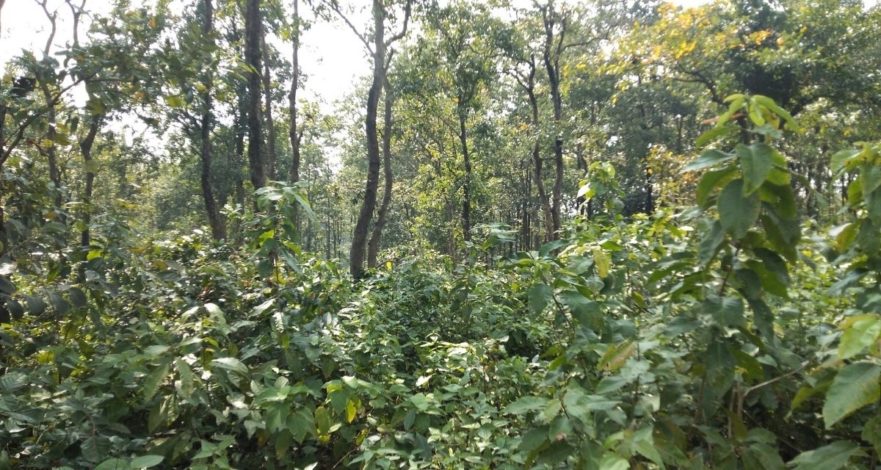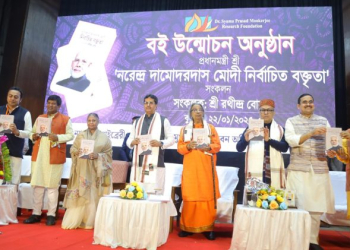New Delhi: The India State of Forest Report 2021 has vindicated what activists, lawyers and academicians have been saying all along – Arunachal Pradesh, which is the second largest forested state in India, is losing its primary forests and that too at a large scale every passing year.
As per the ISFR 2021 — brought out by the Forest Survey of India (FSI) and released on January 13 — Arunachal Pradesh that has a geographical area (GA) of 83,743 sq kms with its 16 hill districts, (total number 25, the recently bifurcated not shown separately in the report) has witnessed a loss of 257 sq kms of forest cover compared to the 2019 assessment.
As per ISFR 2021, the total forest cover (within and outside the recorded forest area) is 66,430.67 sq kms (79.33 per cent of GA). Of that, very dense forest is 21,058.37 sq kms (25.15 per cent), moderate dense forest is 30,175.56 sq kms (36.03 per cent), open forest is 15,196.74 sq kms (18.15 per cent). Scrub, not counted in total, is spread over 796.98 sq kms (0.95 per cent).
Arunachal Pradesh is considered as one of the forest rich states in eastern Himalayas. The state has about 20 per cent species of the country’s fauna, about 4,500 species of flowering plants, 400 species of pteridophytes, 23 species of conifers, 35 species of bamboos, 20 species of cane, 52 species of Rhododendron and more than 500 species of orchids. Two National Parks and 11 Wildlife Sanctuaries constitute the Protected Area network of the state covering 11.68 per cent of its geographical area. Large areas fall under community forests.
Being an entirely tribal state, forests have been the mainstay for livelihood of local people dependent on forest resources. However, over the years, developmental activities, and practises such as jhuming have increased the pressure on forests consistently.
As per the ISFR-2019, the forest cover was 66,687.78 sq kms (79.63 per cent); the ISFR-2017 said the total forest cover was 66,964 sq kms (79.96 per cent) while the ISFR-2015 said the total forest cover was 67,248 sq kms (81.21 per cent).
The only reason mentioned for the negative change detected in the 2017 assessment was: “A decrease of 190 sq kms observed in the forest cover of the state can be attributed to shifting cultivation and developmental activities.”
A December 2021 report by Arunachal Pradesh’s Department of Environment and Forests submitted to the National Green Tribunal in the 2019 case filed by an anti-logging activist Jorjo Tana Tara in connection with illegal forest felling mentioned that during 2009-2019, there has been a decrease of 934.97 sq kms in moderately dense forest in the whole of Arunachal Pradesh, while there has been an increase of 115.81 sq kms of area under scrub forest, 29.61 sq kms of area under open forest and 244.09 sq kms in very dense forest.
This report also mentioned that the main reasons for the negative change in forest cover are shifting cultivation and diversion of forest land for developmental purposes. A total of 221.11 sq kms of area has been diverted for non-forestry activities after clearance under Forest (Conservation) Act, 1980 in these ten years, the report submitted to the NGT said.
Environmental lawyer Ritwick Dutta, who represents Jorjo Tana Tara in the NGT at the Principal Bench, said, “The report claims that the government is taking action/s, but we have challenged that.”
Worst show by eastern districts:
Of the 16, only five districts showed positive change while the rest others showed negative change in the ISFR 2021. Of these, the Lower Dibang Valley, Dibang Valley, Lohit and Anjaw have seen the worst negative trend.
For Dibang Valley and Lower Dibang Valley district, 69.69 per cent of the 13,029 sq kms area are under total forest cover. Of that, 1,688.91 sq kms is very dense forest (VDF), 4,806.97 sq kms is moderately dense forest (MDF) and 2,5383.83 sq kms is open forest (OF) totalling to 9,079.71 sq kms, which is 128.19 sq kms less compared to total cover in 2019 assessment.
Similarly, for Lohit and Anjaw districts, 64.64 per cent of the 11,402 sq kms are under total forest cover. Of that, VDF is 2,016.68 sq kms, MDF is 3,805.80 sq kms and OF is 1,547.55 sq kms totalling to 7,370.03 sq kms, which is 217.57 sq kms less compared to the total forest cover in 2019 assessment.
A major developmental project in Dibang Valley is of road construction from Roing, the headquarters of Lower Dibang Valley district, to Anini, the headquarters of Dibang Valley going on for the last few years. Lohit and Anjaw too have had their share of new roads and especially, Anjaw still has a major highway going on. Many of these are necessary as they connect the plains to the last border points.
But in Anjaw, the reasons go beyond roads. Explained C R Krong, a resident of Anjaw district, there is not just one reason why people are wiping out the pristine jungles.
“In last few years, as the weather conditions are suitable here, people have taken to growing large cardamom in large areas in Anjaw district and along with it, people also grow illegal opium, called Kani by local people,” Krong said.
The easy availability of chainsaw has made matters worse, he said adding, “Earlier, people felled trees with their hands but now, the chainsaw makes it easier with people indulging in selling timber illegally to contractors/mafia.”
Another thing that is increasing in Arunachal Pradesh is dumping of muck and road building debris on the slopes by the contractors. Not just in the area where Krong lives but in other districts too.
Agreed Dr R Sukumar who is a National Board for Wildlife (NBWL) member and veteran scientist at the Centre for Ecological Sciences, Indian Institute of Science (IISc), Bengaluru. He had recently visited Arunachal Pradesh as part of a NBWL team.
Stating that the roads leading to the border areas are a necessity in view of national security, he said, “With road construction in hill areas, the problem is not just that large number of trees are cut, but it is the manner in which the roads are cut, and the muck and debris are dumped on the slopes that leads to more loss of trees.”
Large scale horticulture activities too are replacing forests, Sukumar said – a point validating what Krong from Anjaw district said – and added that he has already conveyed his observations to the NBWL.
In fact, the Eastern Zone of the National Green Tribunal is already hearing since September 2021 a case against National Highway Authority of India (NHAI) and National Highway and Infrastructure Development Corporation Ltd (NHIDC) among others in connection with improper manner of earth/mountain cutting and dumping of stones/boulders and muck into the river in Dibang Valley district.
Arunachal Pradesh government’s PCCF and Principal Secretary, Department of Environment and Forests, R K Singh agreed that Dibang Valley district has witnessed road building activities. But he, in fact, expressed surprise at the ISFR 2021 report and said, “We are going to take this up with the FSI as our records do not show the kind of negative change mentioned for these eastern districts.”
He also said, “We have been taking action against those guilty of illegal tree/forest felling. We have initiated the process to recruit more people and also taken up with the state government to create more posts for the Forest Department.”
(IANS)



















